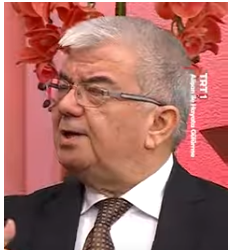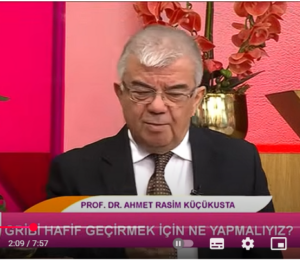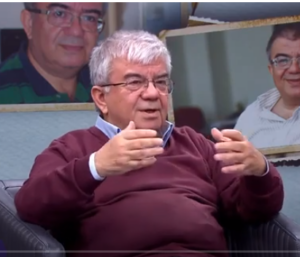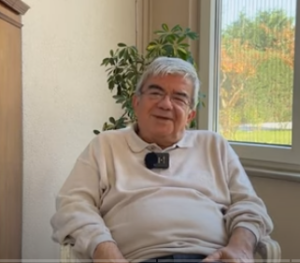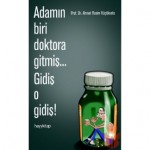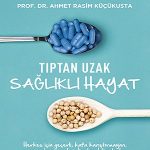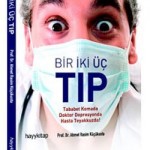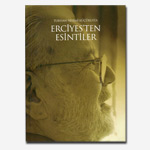HOW THE PANDEMİC IS CHANGİNG THE NORMS OF SCİENCE

-2020’nin sonunda, yalnızca otomobil mühendisliğinde Kovid-19 hakkında yayın yapan bilim insanı yoktu. 2021’in başlarında otomobil mühendislerinin de söyleyecekleri vardı.
-Evrenselcilik biçimine yol açtı. Herkes Kovid-19 bilimi yaptı ya da hakkında yorum yaptı. Ağustos 2021’e kadar, Kovid-19 hakkında yaklaşık bir milyon farklı yazarı içeren 330.000 bilimsel makale yayınlandı. Bir analiz, bilim olarak bildiğimiz şeyi oluşturan 174 disiplinin her birinden bilim adamlarının Kovid-19 hakkında yayın yaptığını gösterdi.
-Konuyla ilgili teknik uzmanlığa sahip olmayan birçok kişi bir gecede uzman kesilerek dünyayı kurtardı.
-Bir epidemiyolog veya sağlık politikası uzmanı olmayan herkes, bu alanlar hakkında genellikle çok az şey bilen ancak hangi görüşlerin doğru olduğunu hemen bilen muhabirler tarafından aniden bir epidemiyolog veya sağlık politikası uzmanı olarak anılabilir.
-Dürüst, sürekli sorgulama ve alternatif yolların araştırılması, iyi bilim için vazgeçilmezdir. Halk sağlığının otoriter (katılımcı değil) versiyonunda, bu faaliyetler vatana ihanet ve firar olarak görülüyordu.
-Baskın anlatı “savaştayız” oldu. Savaşta herkes emirlere uymak zorundadır. Bir müfreze sağa gitmesi emredilirse ve bazı askerler sola manevra yaparsa, asker kaçakları olarak vurulurlar. Bilimsel şüphecilik vurulmalıydı, soru sorulmadı. Emirler açıktı.

***
John P.A. Ioannidis‘ in yazısı:
In the past I had often fervently wished that one day everyone would be passionate and excited about scientific research. I should have been more careful about what I had wished for. The crisis caused by the lethal COVID-19 pandemic and by the responses to the crisis have made billions of people worldwide acutely interested and overexcited about science. Decisions pronounced in the name of science have become arbitrators of life, death, and fundamental freedoms. Everything that mattered was affected by science, by scientists interpreting science, and by those who impose measures based on their interpretations of science in the context of political warfare.
One problem with this new mass engagement with science is that most people, including most people in the West, had never been seriously exposed to the fundamental norms of the scientific method. The Mertonian norms of communalism, universalism, disinterestedness, and organized skepticism have unfortunately never been mainstream in education, media, or even in science museums and TV documentaries on scientific topics.
Before the pandemic, the sharing of data, protocols, and discoveries for free was limited, compromising the communalism on which the scientific method is based. It was already widely tolerated that science was not universal, but the realm of an ever-more hierarchical elite, a minority of experts. Gargantuan financial and other interests and conflicts thrived in the neighborhood of science—and the norm of disinterestedness was left forlorn.
As for organized skepticism, it did not sell very well within academic sanctuaries. Even the best peer-reviewed journals often presented results with bias and spin. Broader public and media dissemination of scientific discoveries was largely focused on what could be exaggerated about the research, rather than the rigor of its methods and the inherent uncertainty of the results.
Nevertheless, despite the cynical realization that the methodological norms of science had been neglected (or perhaps because of this realization), voices struggling for more communalism, universalism, disinterestedness, and organized skepticism had been multiplying among scientific circles prior to the pandemic. Reformers were often seen as holding some sort of a moral higher ground, despite being outnumbered in occupancy of powerful positions. Reproducibility crises in many scientific fields, ranging from biomedicine to psychology, caused soul-searching and efforts to enhance transparency, including the sharing of raw data, protocols, and code. Inequalities within the academy were increasingly recognized with calls to remedy them. Many were receptive to pleas for reform.
Opinion-based experts (while still dominant in influential committees, professional societies, major conferences, funding bodies, and other power nodes of the system) were often challenged by evidence-based criticism. There were efforts to make conflicts of interest more transparent and to minimize their impact, even if most science leaders remained conflicted, especially in medicine. A thriving community of scientists focused on rigorous methods, understanding biases, and minimizing their impact. The field of metaresearch, i.e., research on research, had become widely respected. One might therefore have hoped that the pandemic crisis could have fostered change. Indeed, change did happen—but perhaps mostly for the worst.
Lack of communalism during the pandemic fueled scandals and conspiracy theories, which were then treated as fact in the name of science by much of the popular press and on social media. The retraction of a highly visible hydroxychloroquine paper from the The Lancet was a startling example: A lack of sharing and openness allowed a top medical journal to publish an article in which 671 hospitals allegedly contributed data that did not exist, and no one noticed this outright fabrication before publication. The New England Journal of Medicine, another top medical journal, managed to publish a similar paper; many scientists continue to heavily cite it long after its retraction.
The hottest public scientific debate of the moment—whether the COVID-19 virus was the product of natural evolution or a laboratory accident—could have been settled easily with a minimal demonstration of communalism (“communism,” actually, in the original Merton vocabulary) from China: Opening the lab books of the Wuhan Institute of Virology would have alleviated concerns immediately. Without such openness about which experiments were done, lab leak theories remain tantalizingly credible.
Personally, I don’t want to consider the lab leak theory—a major blow to scientific investigation—as the dominant explanation yet. However, if full public data-sharing cannot happen even for a question relevant to the deaths of millions and the suffering of billions, what hope is there for scientific transparency and a sharing culture? Whatever the origins of the virus, the refusal to abide by formerly accepted norms has done its own enormous damage.
By the end of 2020, only automobile engineering had no scientists publishing on COVID-19. By early 2021, the automobile engineers had their say, too.
The pandemic led seemingly overnight to a scary new form of scientific universalism. Everyone did COVID-19 science or commented on it. By August 2021, 330,000 scientific papers were published on COVID-19, involving roughly a million different authors. An analysis showed that scientists from every single one of the 174 disciplines that comprise what we know as science has published on COVID-19. By the end of 2020, only automobile engineering didn’t have scientists publishing on COVID-19. By early 2021, the automobile engineers had their say, too.
At first sight, this was an unprecedented mobilization of interdisciplinary talent. However, most of this work was of low quality, often wrong, and sometimes highly misleading. Many people without subject-matter technical expertise became experts overnight, emphatically saving the world. As these spurious experts multiplied, evidence-based approaches—like randomized trials and collection of more accurate, unbiased data—were frequently dismissed as inappropriate, too slow, and harmful. The disdain for reliable study designs was even celebrated.
Many amazing scientists have worked on COVID-19. I admire their work. Their contributions have taught us so much. My gratitude extends to the many extremely talented and well-trained young investigators who rejuvenate our aging scientific workforce. However, alongside thousands of solid scientists came freshly minted experts with questionable, irrelevant, or nonexistent credentials and questionable, irrelevant, or nonexistent data.
Social and mainstream media have helped to manufacture this new breed of experts. Anyone who was not an epidemiologist or health policy specialist could suddenly be cited as an epidemiologist or health policy specialist by reporters who often knew little about those fields but knew immediately which opinions were true. Conversely, some of the best epidemiologists and health policy specialists in America were smeared as clueless and dangerous by people who believed themselves fit to summarily arbitrate differences of scientific opinion without understanding the methodology or data at issue.
Disinterestedness suffered gravely. In the past, conflicted entities mostly tried to hide their agendas. During the pandemic, these same conflicted entities were raised to the status of heroes. For example, Big Pharma companies clearly produced useful drugs, vaccines, and other interventions that saved lives, though it was also known that profit was and is their main motive. Big Tobacco was known to kill many millions of people every year and to continuously mislead when promoting its old and new, equally harmful, products. Yet during the pandemic, requesting better evidence on effectiveness and adverse events was often considered anathema. This dismissive, authoritarian approach “in defense of science” may sadly have enhanced vaccine hesitancy and the anti-vax movement, wasting a unique opportunity that was created by the fantastic rapid development of COVID-19 vaccines. Even the tobacco industry upgraded its reputation: Philip Morris donated ventilators to propel a profile of corporate responsibility and saving lives, a tiny fraction of which were put at risk of death from COVID-19 because of background diseases caused by tobacco products.
Other potentially conflicted entities became the new societal regulators, rather than the ones being regulated. Big Tech companies, which gained trillions of dollars in cumulative market value from the virtual transformation of human life during lockdown, developed powerful censorship machineries that skewed the information available to users on their platforms. Consultants who made millions of dollars from corporate and government consultation were given prestigious positions, power, and public praise, while unconflicted scientists who worked pro bono but dared to question dominant narratives were smeared as being conflicted. Organized skepticism was seen as a threat to public health. There was a clash between two schools of thought, authoritarian public health versus science—and science lost.
Honest, continuous questioning and exploration of alternative paths are indispensable for good science. In the authoritarian (as opposed to participatory) version of public health, these activities were seen as treason and desertion. The dominant narrative became that “we are at war.” When at war, everyone has to follow orders. If a platoon is ordered to go right and some soldiers explore maneuvering to the left, they are shot as deserters. Scientific skepticism had to be shot, no questions asked. The orders were clear.
Who gave these orders? Who decided that his or her opinion, expertise, and conflicts should be in charge? It was not a single person, not a crazy general or a despicable politician or a dictator, even if political interference in science did happen—massively so. It was all of us, a conglomerate that has no name and no face: a mesh and mess of half-cooked evidence; frenzied and partisan media promoting parachute journalism and pack coverage; the proliferation of pseudonymous and eponymous social media personas which led even serious scientists to become unrestrained, wild-beast avatars of themselves, spitting massive quantities of inanity and nonsense; poorly regulated industry and technology companies flexing their brain and marketing power; and common people afflicted by the protracted crisis. All swim in a mixture of some good intentions, some excellent thinking, and some splendid scientific successes, but also of conflicts, political polarization, fear, panic, hatred, divisiveness, fake news, censorship, inequalities, racism, and chronic and acute societal dysfunction.
Heated but healthy scientific debates are welcome. Serious critics are our greatest benefactors. John Tukey once said that the collective noun for a group of statisticians is a quarrel. This applies to other scientists, too. But “we are at war” led to a step beyond: This is a dirty war, one without dignity. Opponents were threatened, abused, and bullied by cancel culture campaigns in social media, hit stories in mainstream media, and bestsellers written by zealots. Statements were distorted, turned into straw men, and ridiculed. Wikipedia pages were vandalized. Reputations were systematically devastated and destroyed. Many brilliant scientists were abused and received threats during the pandemic, intended to make them and their families miserable.
Anonymous and pseudonymous abuse has a chilling effect; it is worse when the people doing the abusing are eponymous and respectable. The only viable responses to bigotry and hypocrisy are kindness, civility, empathy, and dignity. However, barring in-person communication, virtual living and social media in social isolation are poor conveyors of these virtues.
Politics had a deleterious influence on pandemic science. Anything any apolitical scientist said or wrote could be weaponized for political agendas. Tying public health interventions like masks and vaccines to a faction, political or otherwise, satisfies those devoted to that faction, but infuriates the opposing faction. This process undermines the wider adoption required for such interventions to be effective. Politics dressed up as public health not only injured science. It also shot down participatory public health where people are empowered, rather than obligated and humiliated.
A scientist cannot and should not try to change his or her data and inferences based on the current doctrine of political parties or the reading du jour of the social media thermometer. In an environment where traditional political divisions between left and right no longer seem to make much sense, data, sentences, and interpretations are taken out of context and weaponized. The same apolitical scientist could be attacked by left-wing commentators in one place and by alt-right commentators in another. Many excellent scientists have had to silence themselves in this chaos. Their self-censorship has been a major loss for scientific investigation and the public health effort. My heroes are the many well-intentioned scientists who were abused, smeared, and threatened during the pandemic. I respect all of them and suffer for what they went through, regardless of whether their scientific positions agreed or disagreed with mine. I suffer for and cherish even more those whose positions disagreed with mine.
There was absolutely no conspiracy or preplanning behind this hypercharged evolution. Simply, in times of crisis, the powerful thrive and the weak become more disadvantaged. Amid pandemic confusion, the powerful and the conflicted became more powerful and more conflicted, while millions of disadvantaged people have died and billions suffered.
I worry that science and its norms have shared the fate of the disadvantaged. It is a pity, because science can still help everyone. Science remains the best thing that can happen to humans, provided it can be both tolerant and tolerated.
Kaynak: https://www.tabletmag.com/sections/science/articles/pandemic-science
